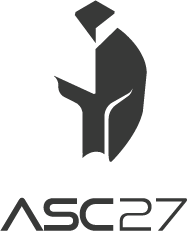AI avatars, also known as digital companions, are transforming technology to promote inclusivity and accessibility. In this article, we explore how AI avatars, like ReAvat, are breaking down barriers, ensuring that technology is accessible to all.
The Significance of Inclusivity and Accessibility
In today’s world, the importance of inclusivity and accessibility cannot be overstated. People with disabilities often face significant barriers when navigating the digital world. Whether it’s visiting websites, accessing educational content or communicating, these barriers can be very annoying and limiting.
AI Avatars: Pioneers of Inclusivity and Accessibility
AI avatars have proven to be true trailblazers in this area. Their versatility and adaptability allow them to be adapted to individual needs, improving the digital experience for people with disabilities. Real-world examples show how they interpret sign language, respond to voice commands and improve communication for people with speech disabilities.

Navigating Ethical and Legal Considerations
As we use AI avatars to improve inclusivity and accessibility, it’s important that we’re aware of the need for responsible implementation. While we won’t go into the ethical and legal challenges here, it’s important that we pay attention to aspects such as privacy, consent and accurate representation. These factors play an important role in ensuring that AI avatars are used in a way that benefits everyone.
Enabling Technologies and Practical Applications
AI avatars are at the forefront of technology for inclusivity and accessibility. One breakthrough technology leading the way is “ReAvat”
ReAvat is a breakthrough technology that takes inclusivity and personalization to new heights. With just one minute of video footage and one minute of voice recording, ReAvat creates an avatar that not only mimics your appearance, but also your voice. This multilingual avatar provides an exceptionally authentic and inclusive experience. By allowing users to interact with technology through avatars that reflect their own appearance and voice, ReAvat represents a major step forward in accessibility and inclusivity.
Practical Applications for Inclusivity and Accessibility

Now let’s look at practical scenarios that illustrate ReAvat’s central role in improving inclusion and accessibility:
Inclusive Customer Service ReAvat integrates seamlessly with customer support platforms to provide inclusive services through avatars tailored to the individual customer, improving accessibility through avatars communicating in users’ preferred languages.
Accessible E-Learning In education, ReAvat can create avatars for teachers to deliver engaging and personalised learning experiences to students. These avatars can offer lessons in different languages, ensuring inclusivity and accessibility for students from different backgrounds.
Healthcare Inclusivity In telemedicine and healthcare settings, ReAvat enables patients to interact with avatars that mimic healthcare professionals, enriching the overall patient experience.
Entertainment and Representation ReAvat brings inclusivity and accessibility to the forefront of the entertainment industry. By developing avatars that authentically represent different backgrounds, both inclusivity and audience accessibility for audiences.
Accessibility Features For people with speech or mobility impairments, ReAvat is an important tool. Users can control their avatars to communicate and interact more effectively with the technology, promoting accessibility.
These practical applications highlight the versatility of ReAvat in promoting inclusion and accessibility in different areas, making digital interactions and services more accessible and inclusive.
The Future of Inclusivity and Accessibility with AI Avatars
In the coming years, AI avatars will play an even more important role in promoting inclusivity and accessibility. As technology advances, we can expect to see further innovations in AI avatars that will make them even more adaptable and personalised. However, it’s important that we address challenges such as privacy and ethics as this technology evolves.
In conclusion, AI avatars, exemplified by innovations such as ReAvat, are reshaping the landscape of inclusivity and accessibility. They offer a promising solution to the challenges faced by people with disabilities in a technology-driven world. While ethical and legal concerns remain, the potential for an inclusive and accessible future with AI avatars is nothing short of exhilarating.
If you’d like to learn more about ReAvat and how it can improve inclusivity and accessibility in your specific context, don’t hesitate to contact us.








